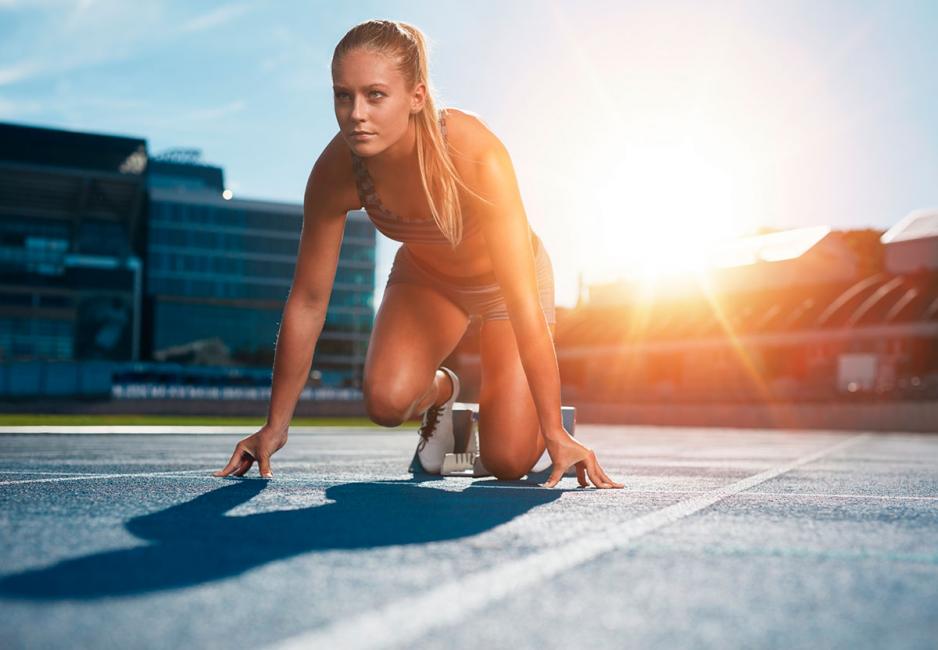
Optimizing Visualization for Mental Toughness
All of us instinctively use visualization (aka imagery) to help us perform better. Have you ever paid close attention to an expert’s technique and then tried to replicate it in your mind? Have you mentally practiced your own performance before physically executing it? What about imagining how wonderful it will be to fully recover from an injury? Perhaps you’ve mentally rehearsed the exhilaration you’ll feel once you’ve completed an event you’ve been training for?
Imagery is a form of simulation training that can be used to learn new skills, plan performance strategies, improve technique, recover from injury, and develop mental toughness for optimal success in sport and fitness. The technique is among the top mental toughness tools used by Olympic athletes—possibly #1. A study conducted at the U.S. Olympic Training Center in Colorado Springs, Colorado, demonstrated that 90% of the athletes and 94% of the coaches used some form of imagery (Murphy, Jowdy
&
Durtschi 1990). A second study, at the Canadian Olympic Training Center in Calgary, Alberta, found that 99% of Olympians used it (Orlick
&
Partington 1988).
More recent research on the effectiveness of imagery on performance clearly indicates positive results. Whether it’s for improving technical and tactical skills (Jordet 2005), increasing confidence and coping with anxiety (Evans, Jones
&
Mullen 2004), or simply aiding in the learning of new motor skills (Morris, Spittle
&
Perry 2004), athletes, coaches, fitness enthusiasts and fitness professionals continue to endorse imagery as a valuable tool for producing an optimal state of performance.
How Does It Work?
How can simply thinking about doing a handstand, visualizing ourselves coping with the anxiety of new choreography, or imagining the disappearance of swelling help us accomplish these things? Our minds can’t distinguish between what’s real and what’s imagined. Just think about the last time you woke up from a nightmare terrified about something that, at the time, appeared as real as could be, but obviously was not. Although you never left your bed, someone assessing your heart rate, skin conductance and other physiological measurements might easily have believed you had just returned from a run.
For sport and fitness performance, imagery creates mental blueprints of a past or upcoming performance. When repeatedly rehearsed, these blueprints are more easily transferred to external actions, maximizing performance capabilities. We cannot deny the power of imagery; it’s been proven too many times to give us the mental edge we all need for peak performance.
Optimizing Visualization
To reap the maximum benefits of imagery, here are two important details for you and your clients to remember:
1. Be More Than What You See
For your mind to believe your imagery is real and for your neurotransmitters and muscle fibers to fire off in the correct pattern and with accurate speed, it is imperative that your imagery incorporate as many senses as possible. When you use imagery, pay attention to what you see, smell, hear, taste, and feel texturally and kinesthetically.
For example, as you’re driving to a group fitness class, see yourself powering through the challenging sections, hear the inspirational music, taste the sweat on your lips, smell the fitness room, and feel the weights in your hands as well as the floor beneath you as you move around. Calling on all of your senses helps to create a more vivid and controlled imagery, making the experience more real and ultimately increasing the probability that your performance will match your imagery (Weinberg
&
Gould 2011).
2. Commit to Excellence, Not Perfection
In my consulting practice, some athletes and fitness enthusiasts say they struggle with imagery because they mentally rehearse negative performances. For example, in their minds they experience getting passed by another cyclist, falling while attempting handstand or tiring out before a set is over. I tell them the same thing I’ll tell you: It’s all good!
Why? Because perfect performances in sport and fitness are extremely rare. How many indoor cyclists can maintain a specific cadence on their first ride? How many yogis can hold a handstand at every attempt? How many weightlifters can perform a specific set of chin-ups without ever experiencing some level of failure? If the point of imagery is to mentally practice a
real
performance, some negative imagery is part of the process.
The key to peak performance lies not in avoiding all thoughts of failure, but in immediately using your imagery to recover and carry on when you do mentally rehearse something negative. Looking back at the examples above, a first-time indoor cyclist can use imagery to experience falling behind from the rest of the class and then focusing on his pedal stroke to speed up his cadence. A yogi can mentally rehearse attempting a handstand, losing her balance and then taking two belly breaths before making a second attempt—this time holding the pose. A weightlifter can mentally practice performing chin-ups, experiencing fatigue and then using a fitness buddy to help with the last three repetitions.
To be clear, I’m not saying you should never experience a personal best performance in your mind. Of course this type of imagery will work to increase confidence, motivation, concentration and overall skill level. However, when you use imagery only for perfect performances, you miss out on the opportunity to practice effective recoveries from the unfortunate yet inevitable lapses and disappointments that occur in sport and fitness. As long as you finish every negative imagery session with a successful recovery, you’ll be committed to peak performance and personal excellence.
To read more about how to use imagery to improve performance, please see “Visualization as the #1 Mental Toughness Tool” in the online IDEA Library or in the March 2016 print issue of IDEA Fitness Journal. If you cannot access the full article and would like to, please contact the IDEA Inspired Service Team at (800) 999-4332, ext. 7.